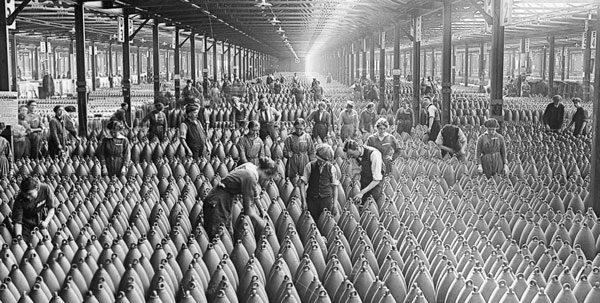During World War I, women were recruited into jobs vacated by men who were fighting in the war. New jobs were created as part of the war effort. The high demand for weapons resulted in the munitions factories becoming the largest single employer of women during 1918.
Women and men work amid rows of artillery shells at the National Filling Factory in Chilwell (1917)
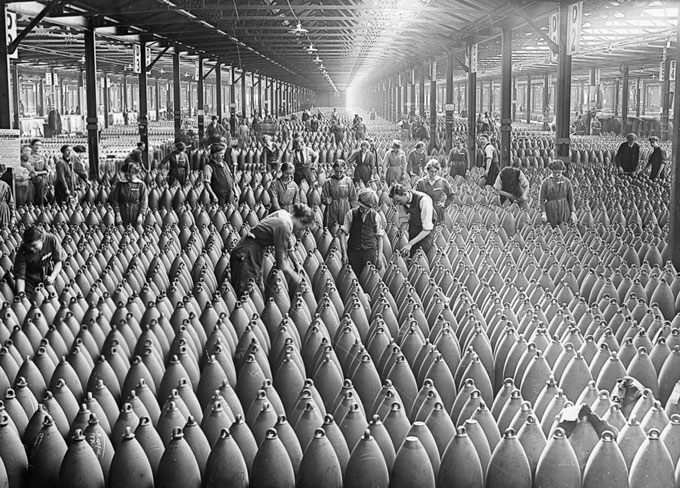
Photo credit: University of British Columbia Library
Initially, there was resistance to hiring women, but eventually the government began coordinating the employment of women through campaigns and recruitment drives.
A large numbers of women worked heavy or precision machinery in engineering, led cart horses on farms, and worked in the civil service and factories. By 1917 munitions factories, which primarily employed women workers, produced 80% of the weapons and shells used by the British Army.
Known as ‘canaries’ because they had to handle TNT (the chemical compound trinitrotoluene that is used as an explosive agent in munitions) that caused their skin to turn yellow, these women risked their lives working with poisonous substances without adequate protective clothing or the required safety measures. Around 400 women died from overexposure to TNT during WWI.
When the war ended, many women were fired to free up jobs for returning veterans. These photos from the University of British Columbia offer a broad survey of the women who stepped up to keep their country running through an unprecedented conflict.
Rubber workers in Lancashire make mouthpieces for gas masks.
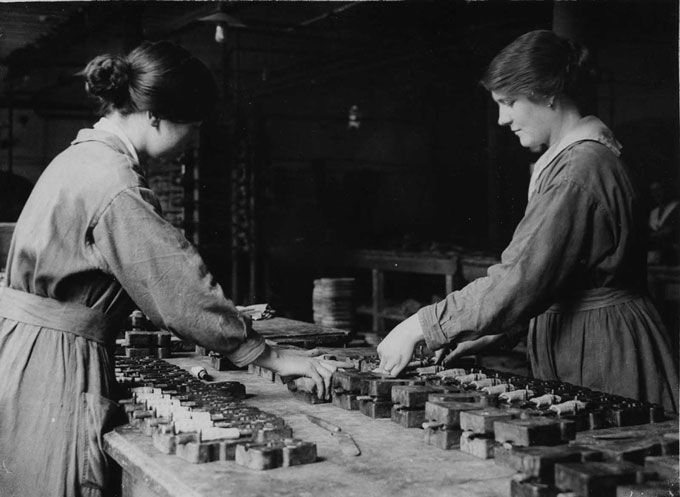
Photo credit: University of British Columbia Library
Chemical workers load wheelbarrows with lime.
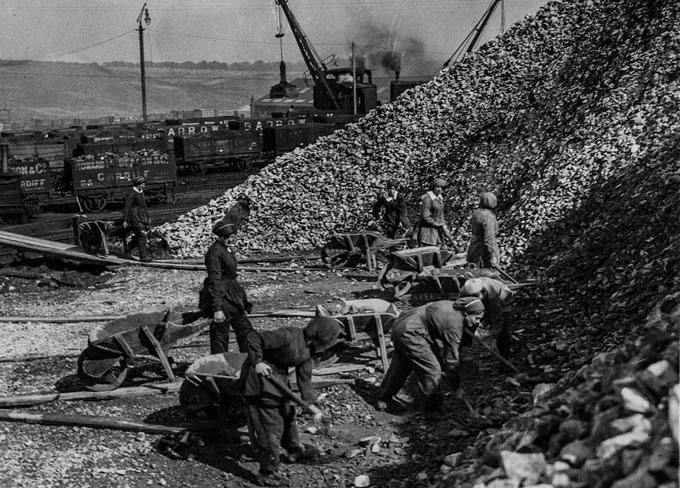
Photo credit: University of British Columbia Library
A worker hauls a cake of nitrate ammonia out of a dryer in a chemical plant.
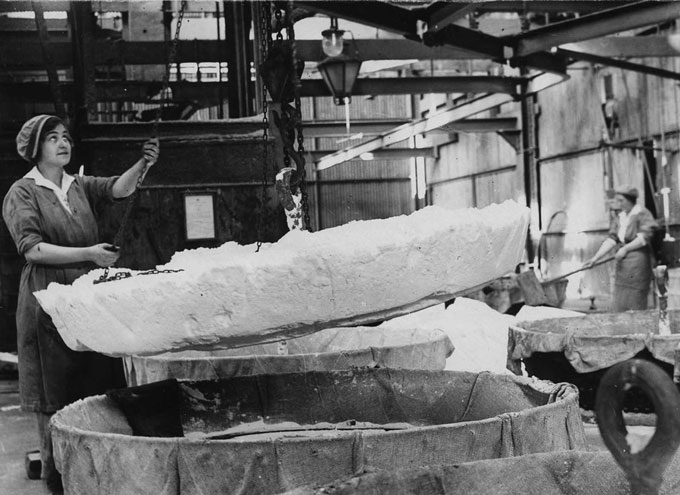
Photo credit: University of British Columbia Library
Workers in a chemical laboratory.

Photo credit: University of British Columbia Library
A worker welds a frame tug for a military airplane.
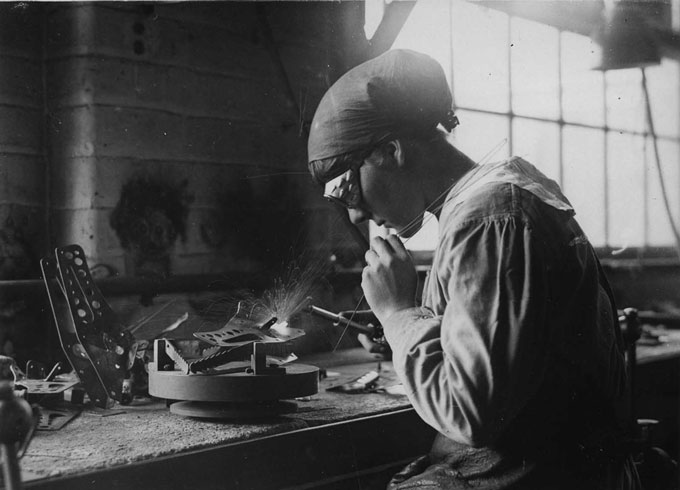
Photo credit: University of British Columbia Library
Tannery workers draw skins from a lime pit.
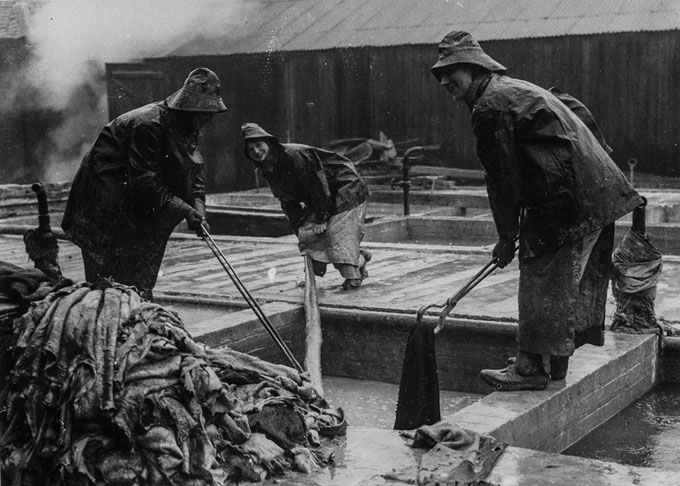
Photo credit: University of British Columbia Library
Tannery workers.
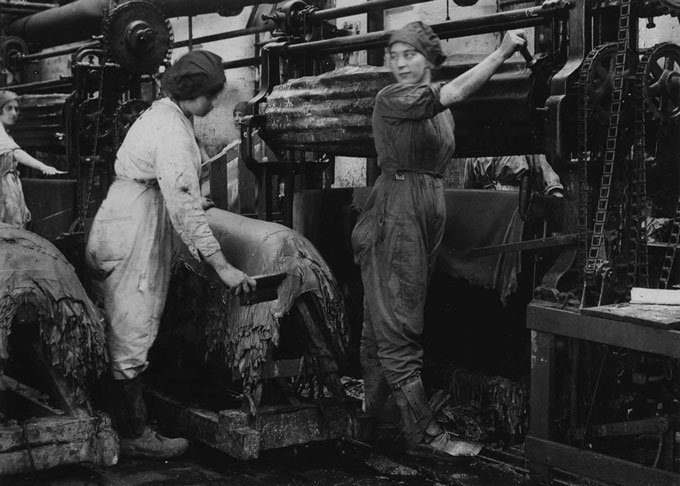
Photo credit: University of British Columbia Library
A Women’s Royal Naval Service instructor drills recruits with gas masks
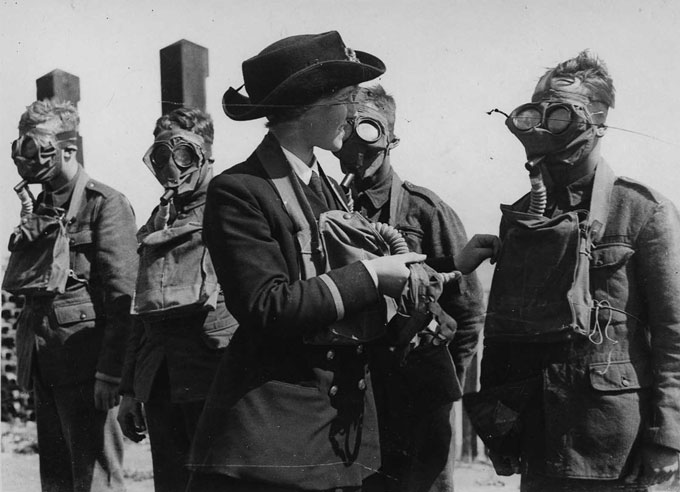
Photo credit: University of British Columbia Library
Mine net workers wire floats together
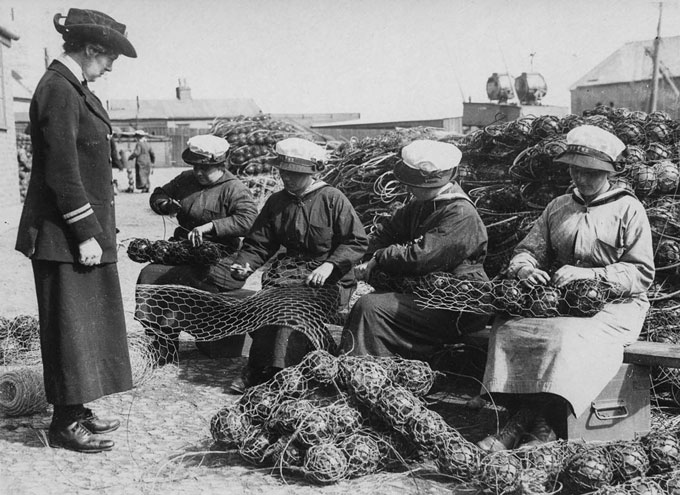
Photo credit: University of British Columbia Library
Workers prepare for the construction of concrete ships
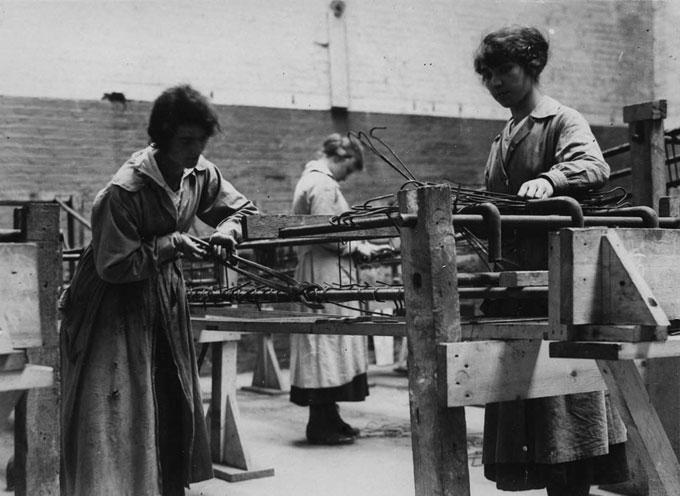
Photo credit: University of British Columbia Library
Workers build parts for boilers and condensers
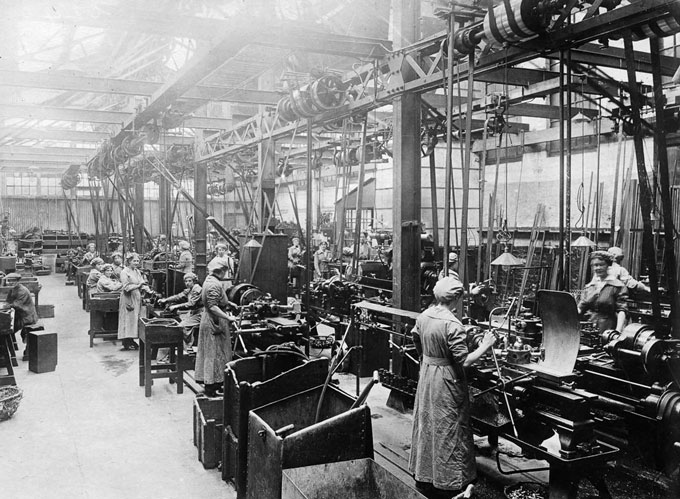
Photo credit: University of British Columbia Library
A rubber worker operates a spreading machine in a tire factory. A worker shapes a tire
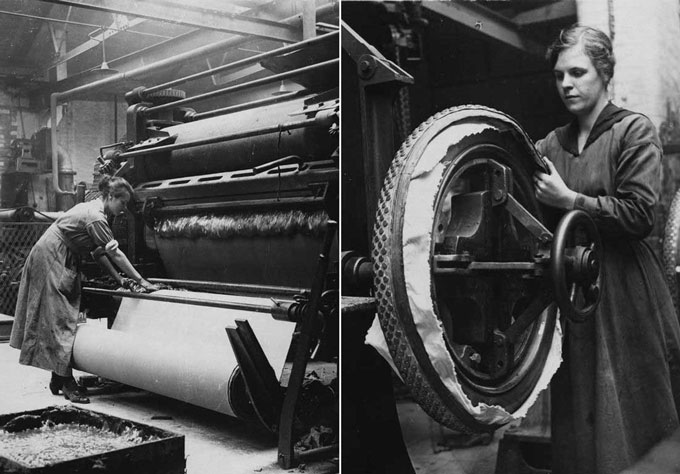
Photo credit: University of British Columbia Library
Workers craft electrical fittings
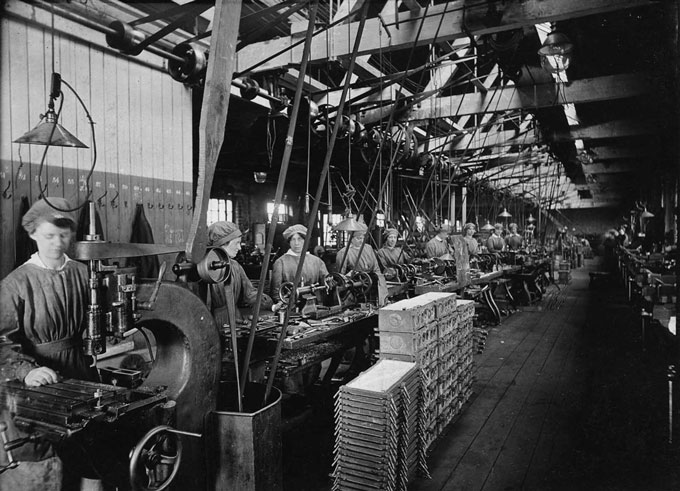
Photo credit: University of British Columbia Library
A 20 ton crane driver
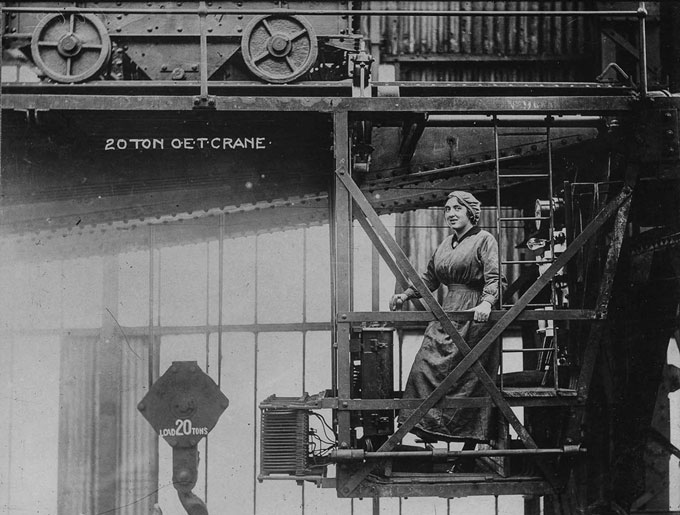
Photo credit: University of British Columbia Library
Workers test a mine with air pressure. WRNS workers fit a mine
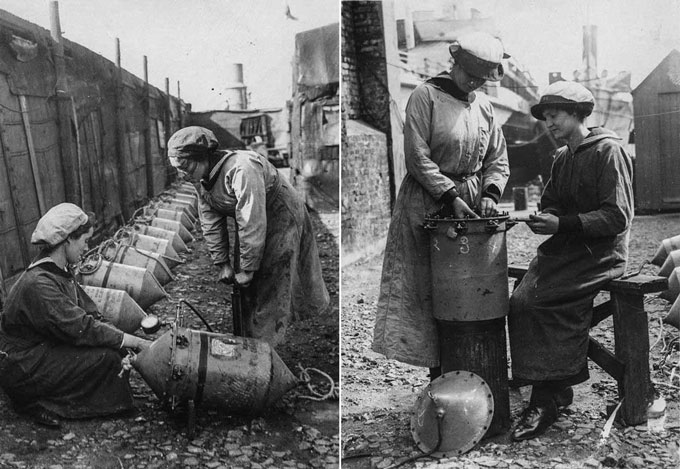
Photo credit: University of British Columbia Library
Gear planers in a factory in Sunderland
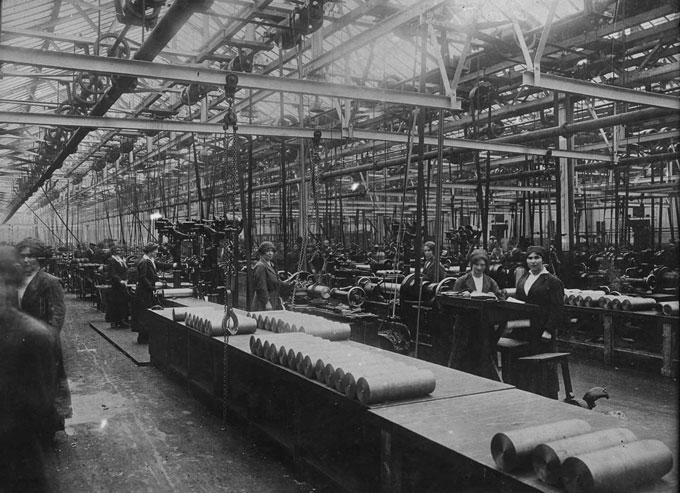
Photo credit: University of British Columbia Library
A worker operates a circular saw
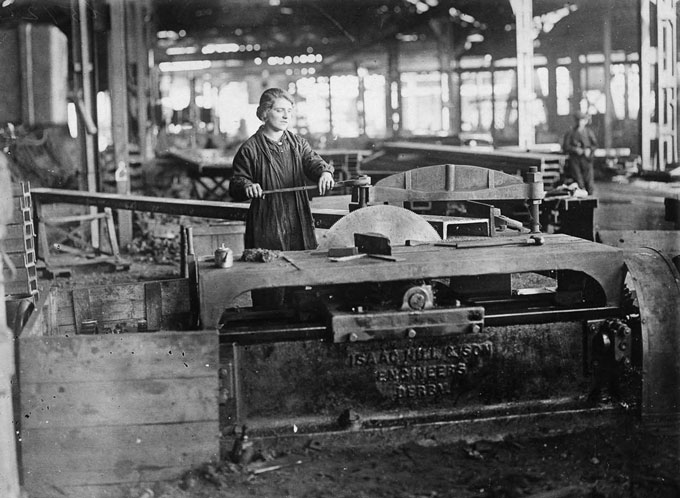
Photo credit: University of British Columbia Library
A worker drills holes for the ribs of airship sheds
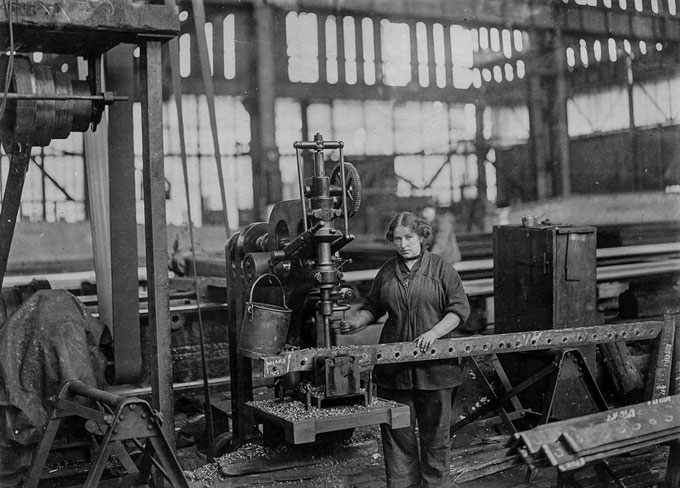
Photo credit: University of British Columbia Library
Workers in a dressing shop
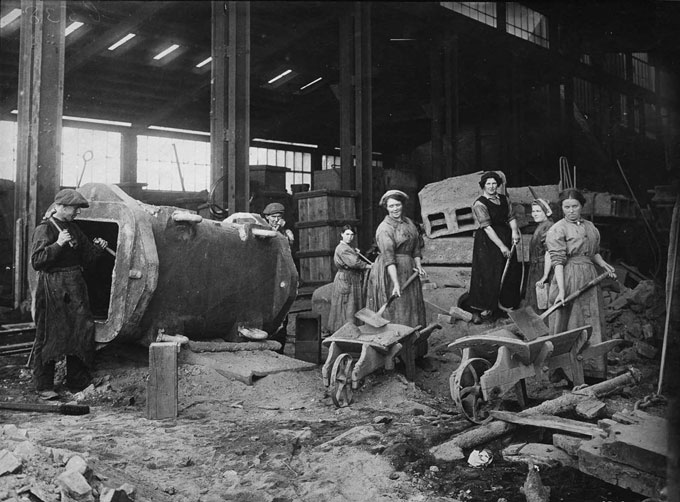
Photo credit: University of British Columbia Library
Workers paint War Office vehicles
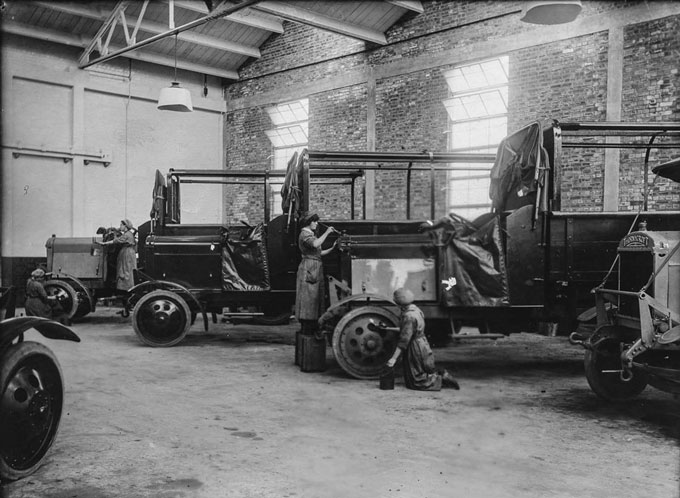
Photo credit: University of British Columbia Library
Workers haul wood in a lumber yard
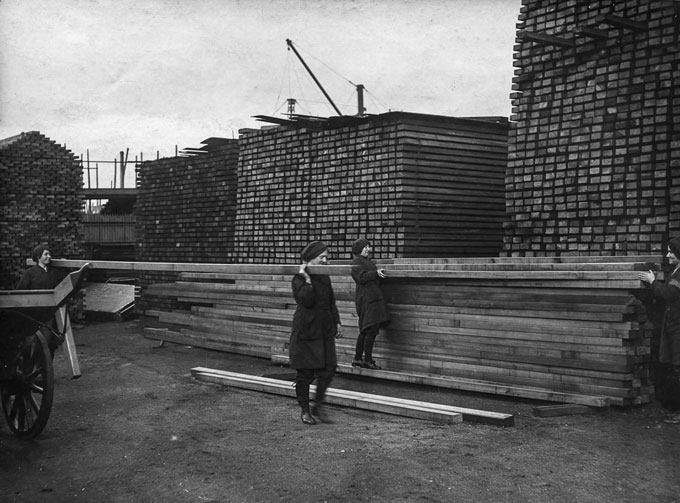
Photo credit: University of British Columbia Library
Asbestos workers at a factory in Lancashire. Workers paint airplanes at a factory near Birmingham
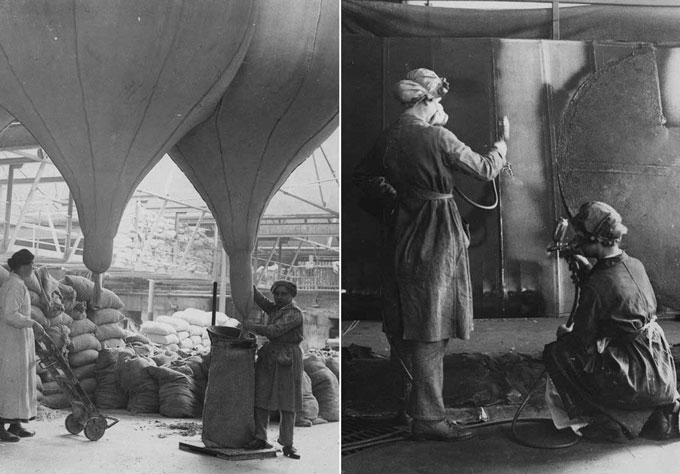
Photo credit: University of British Columbia Library
Workers haul away earth while excavating for the installation of hydraulic pumps
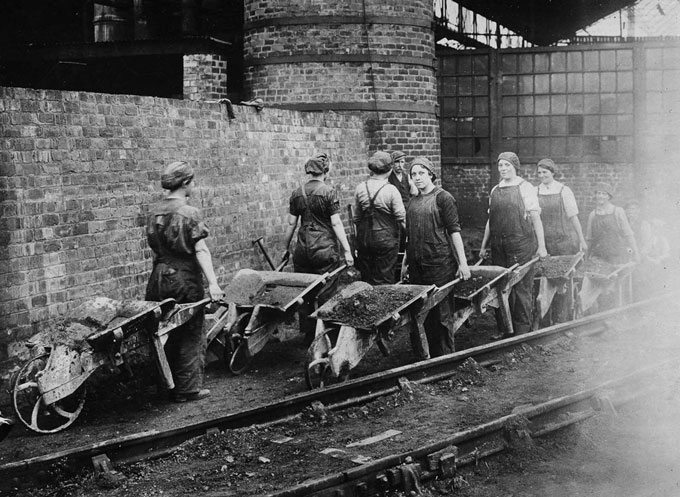
Photo credit: University of British Columbia Library
A worker with an electric motor
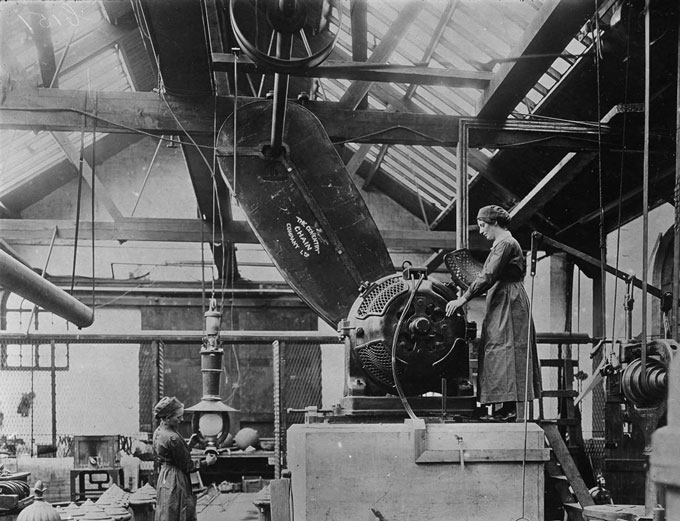
Photo credit: University of British Columbia Library
Railway workers unload goods from a train
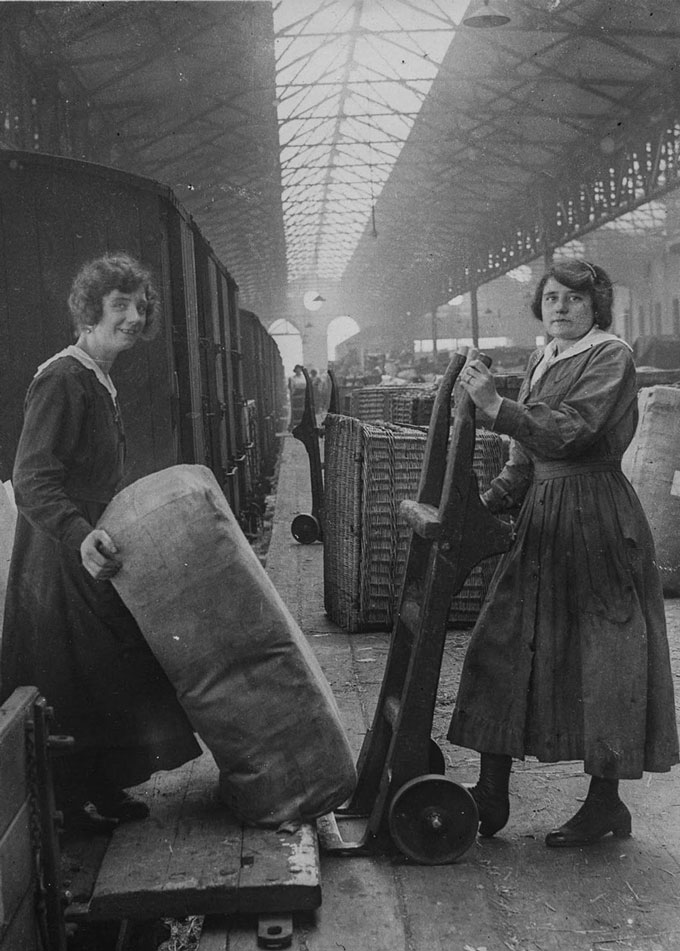
Photo credit: University of British Columbia Library
Workers construct and treat airplane wings
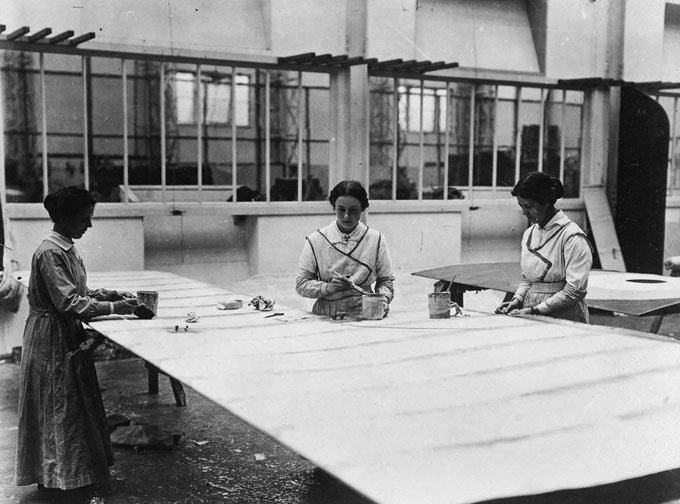
Photo credit: University of British Columbia Library
Workers assemble artillery shells
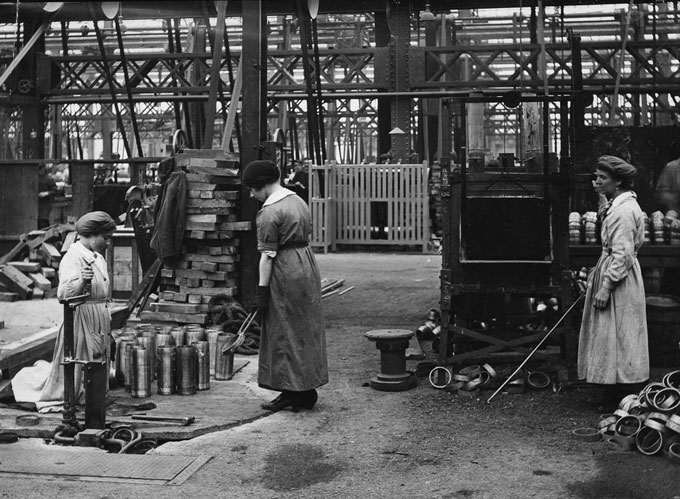
Photo credit: University of British Columbia Library
Workers paint steel beams
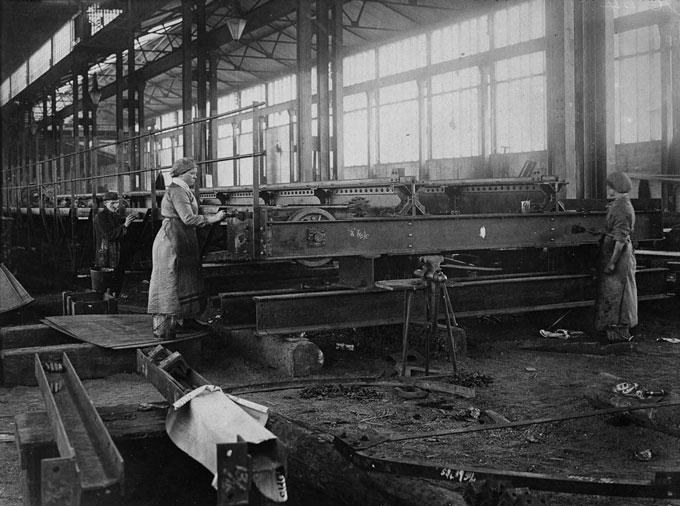
Photo credit: University of British Columbia Library
Workers shovel nitrate of soda into a skip
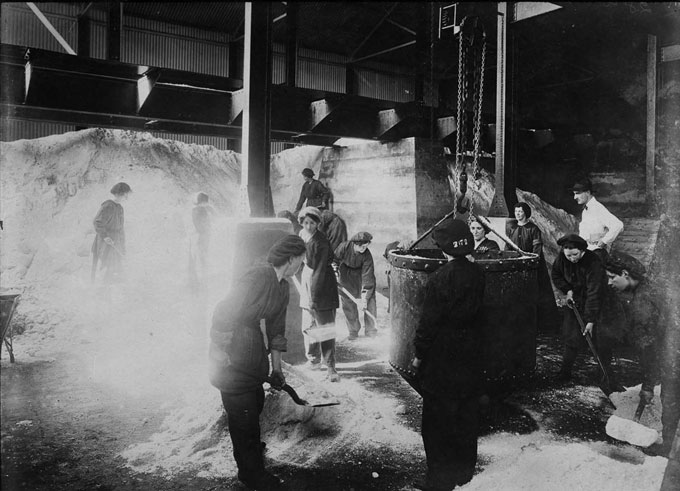
Photo credit: University of British Columbia Library
A railway worker operates signal box levers. Workers clean a locomotive
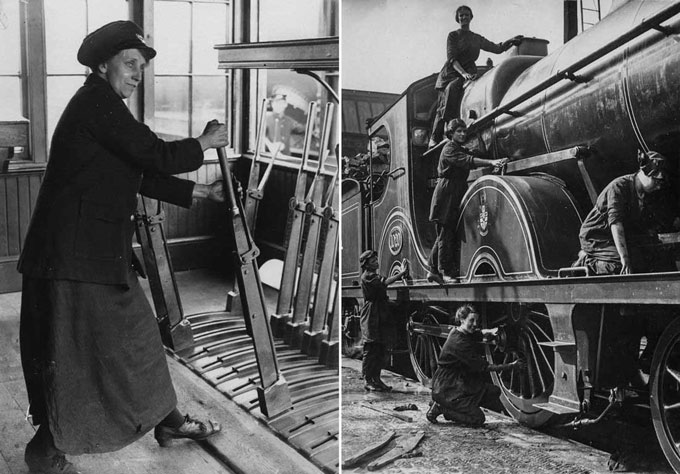
Photo credit: University of British Columbia Library
Workers in a brass fittings shop
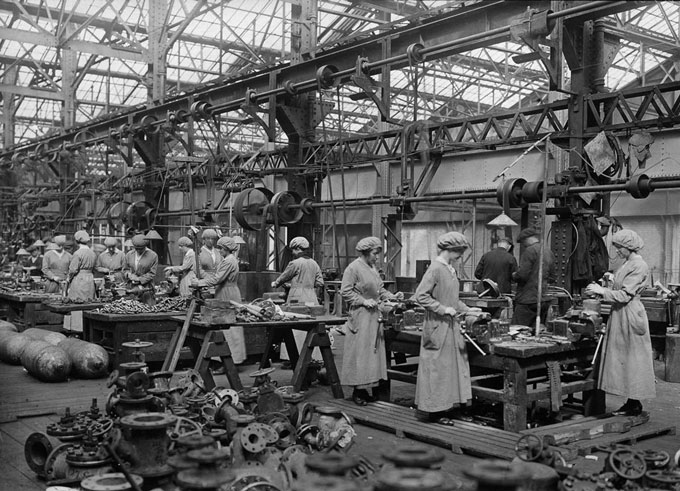
Photo credit: University of British Columbia Library
A crane driver
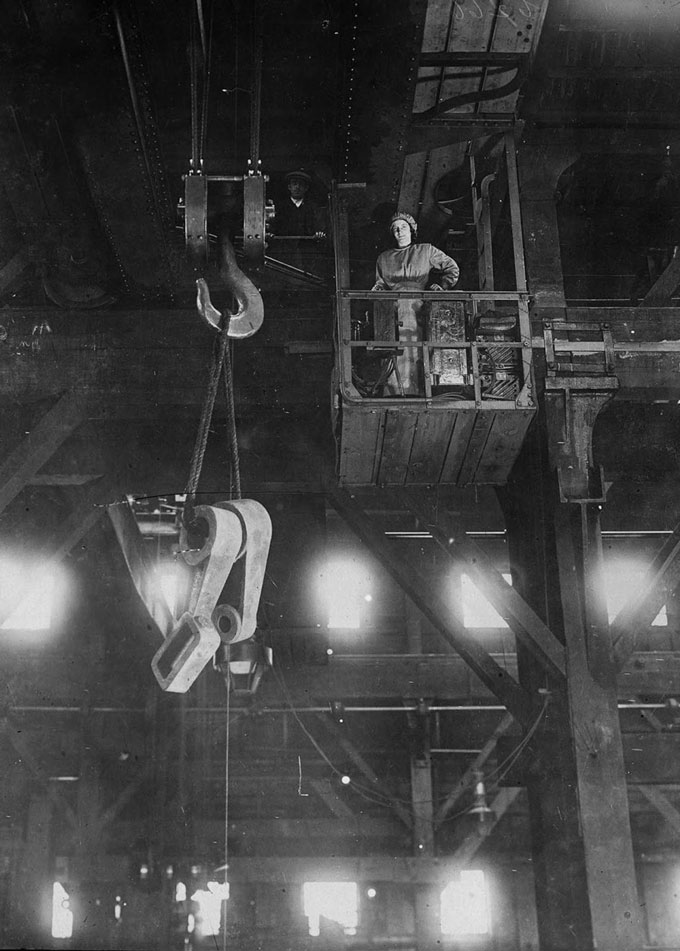
Photo credit: University of British Columbia Library

